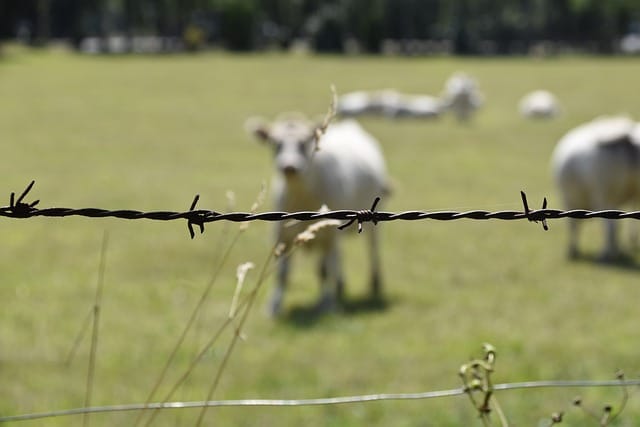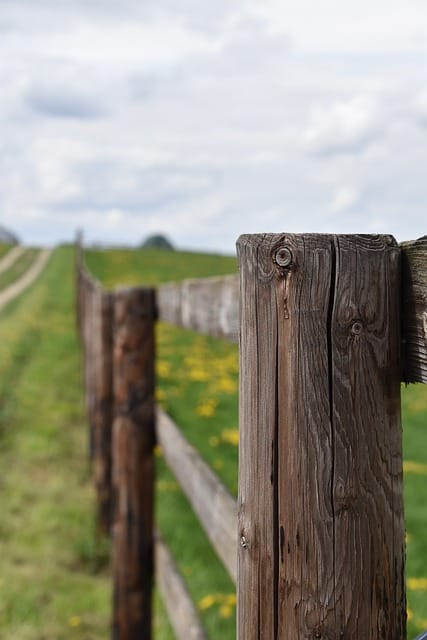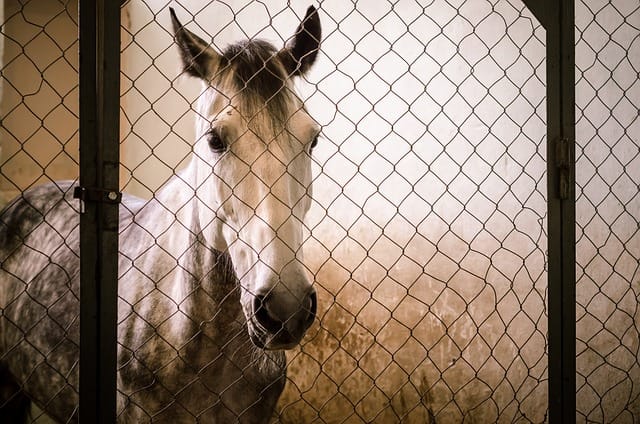Farm Fencing Materials: The Complete Guide for 2025
Introduction
Choosing the right fencing materials for your farm is a crucial decision that impacts both your livestock’s safety and your operation’s efficiency. This comprehensive guide will help you understand different farm fencing materials, their applications, and how to select the best option for your specific needs. you can also check out our post on farm fence posts
Quick Guide: Top Fencing Materials at a Glance
Before diving deep, here’s a quick overview of the main fencing materials we’ll cover:
- Wire Fencing (High-tensile, Woven, Barbed)
- Wood Fencing (Post-and-rail, Board)
- Metal Fencing (Pipe, Panel)
- Electric Fencing
- Synthetic Materials (Vinyl, PVC)
Understanding Fencing Requirements
Livestock Considerations
Different animals require different fencing solutions:
- Cattle: Need strong, visible barriers
- Horses: Require safe, visible, and sturdy fencing
- Sheep and Goats: Need closely spaced, escape-proof fencing
- Pigs: Require strong, ground-level secure fencing
- Poultry: Need predator-proof, fine-mesh fencing
Property Requirements
Consider these factors when selecting fencing materials:
- Property size and perimeter length
- Terrain and soil conditions
- Local climate and weather patterns
- Aesthetic preferences
- Local regulations and zoning laws
Detailed Analysis of Fencing Materials

Wire Fencing Options
High-Tensile Wire
Advantages:
- Long lifespan (20-30 years)
- Low maintenance requirements
- Cost-effective for large areas
- Strong and durable
Disadvantages:
- Requires proper installation
- May be less visible to animals
- Initial setup costs can be high
- Special tools needed for installation
Best Used For:
- Cattle containment
- Perimeter fencing
- Large pasture divisions
Woven Wire
Advantages:
- Excellent for small animals
- Good predator protection
- Durable construction
- Versatile applications
Disadvantages:
- Higher material costs
- Labor-intensive installation
- Can be damaged by large animals
- May require more frequent repairs
Best Used For:
- Sheep and goats
- Poultry enclosures
- Multi-species pastures
Barbed Wire
Advantages:
- Cost-effective
- Easy to install
- Long-lasting
- Low maintenance
Disadvantages:
- Can injure animals
- Not suitable for all livestock
- May face legal restrictions
- Poor visibility
Best Used For:
- Cattle operations
- Perimeter security
- Remote locations
Wood Fencing Systems

Post-and-Rail
Advantages:
- Aesthetically pleasing
- Highly visible to animals
- Durable when properly maintained
- Good for horse containment
Disadvantages:
- Higher material costs
- Regular maintenance required
- Susceptible to weather damage
- Labor-intensive installation
Best Used For:
- Horse paddocks
- Decorative boundaries
- Small pastures
Board Fencing
Advantages:
- Strong and sturdy
- Excellent visibility
- Long-lasting with maintenance
- Attractive appearance
Disadvantages:
- Expensive materials
- High maintenance needs
- Weather susceptible
- Labor-intensive
Best Used For:
- Horse facilities
- Show farms
- Front-facing boundaries
Metal Fencing Options

Pipe Fencing
Advantages:
- Extremely durable
- Low maintenance
- Long lifespan
- Strong containment
Disadvantages:
- High initial cost
- Heavy materials
- Professional installation recommended
- Limited flexibility
Best Used For:
- Corrals
- Heavy livestock areas
- High-traffic zones
Panel Fencing
Advantages:
- Quick installation
- Portable options available
- Sturdy construction
- Flexible configurations
Disadvantages:
- Higher cost per foot
- Limited height options
- Storage needs for portable panels
- May require frequent realignment
Best Used For:
- Temporary enclosures
- Rotational grazing
- Handling areas
Electric Fencing Systems
Permanent Electric
Advantages:
- Effective containment
- Lower material costs
- Psychological barrier
- Long-lasting
Disadvantages:
- Requires power source
- Regular monitoring needed
- Weather can affect performance
- Training period for animals
Best Used For:
- Rotational grazing
- Perimeter security
- Predator control
Temporary Electric
Advantages:
- Highly portable
- Quick setup
- Cost-effective
- Flexible configurations
Disadvantages:
- Less durable
- Regular maintenance
- Limited security
- Weather sensitive
Best Used For:
- Rotational grazing
- Temporary paddocks
- Short-term containment
Cost Analysis and ROI
Initial Costs per Linear Foot (2025 Averages)
- High-tensile wire: $1.50-$2.50
- Woven wire: $2.00-$4.00
- Barbed wire: $1.25-$2.00
- Post-and-rail: $8.00-$15.00
- Board fence: $10.00-$20.00
- Pipe fencing: $15.00-$25.00
- Panel fencing: $12.00-$18.00
- Electric fencing: $0.75-$1.50
Long-term Maintenance Costs
Consider these annual maintenance expenses:
- Wood fence maintenance: 10-15% of initial cost
- Wire fence maintenance: 2-5% of initial cost
- Metal fence maintenance: 1-3% of initial cost
- Electric fence maintenance: 5-8% of initial cost
Installation Considerations
DIY vs. Professional Installation
Factors to consider:
- Project scale
- Technical requirements
- Available time
- Equipment needs
- Skill level required
Essential Tools for Installation
Basic tools needed:
- Post hole digger
- Level
- Measuring tape
- String line
- Fence stretcher
- Wire cutters
- Post driver
Maintenance and Upkeep
Regular Maintenance Tasks
- Inspect fencing monthly
- Check tension quarterly
- Clear vegetation regularly
- Repair damage promptly
- Test electric systems weekly
Seasonal Considerations
- Spring: Check for winter damage
- Summer: Manage vegetation
- Fall: Prepare for winter
- Winter: Monitor snow load
Environmental Impact and Sustainability
Eco-Friendly Options
- Recycled materials
- Local sourcing
- Sustainable wood
- Solar-powered electric
Wildlife Considerations
- Migration patterns
- Local species needs
- Wildlife corridors
- Safe passage options
Conclusion
Selecting the right fencing materials requires careful consideration of multiple factors:
- Livestock needs
- Property requirements
- Budget constraints
- Maintenance capabilities
- Environmental conditions
Also you can check our guide on Farm Gate Installation
Additional Resources
Planning Tools
- Fencing calculators
- Material estimators
- Layout planning guides
- Cost comparison tools
Expert Help
- Local agricultural extension offices
- Professional fence contractors
- Farm supply stores
- Agricultural consultants
Innovation in Farm Fencing
Smart Fencing Technology
Modern farming has introduced innovative fencing solutions that combine traditional materials with new technology. These systems offer:
- Real-time monitoring capabilities
- Automated voltage monitoring for electric fences
- Mobile app integration
- Solar-powered options
- GPS tracking for rotational grazing
Sustainable Fencing Solutions
As environmental consciousness grows, sustainable fencing options have emerged:
- Recycled plastic post options
- Solar-powered electric systems
- Biodegradable temporary fencing
- Locally sourced materials
- Low-impact installation methods
Regional Considerations
Climate-Specific Choices
Different regions require different fencing approaches:
Humid Regions:
- Rust-resistant materials
- Proper drainage systems
- Regular maintenance schedules
- Treated wood options
Arid Regions:
- UV-resistant materials
- Drought-resistant post setting
- Temperature fluctuation allowances
- Sand and dust protection
Cold Regions:
- Snow load considerations
- Frost heave protection
- Wider spacing for snow removal
- Heavy-duty materials
Coastal Areas:
- Corrosion-resistant materials
- Wind load calculations
- Salt spray protection
- Sturdy anchoring systems
Comprehensive FAQs About Farm Fencing
1. What is the most cost-effective fencing for large farms?
For large-scale farming operations, high-tensile wire fencing typically offers the best cost-to-benefit ratio. The initial material cost is moderate, installation can be accomplished with a small crew, and maintenance requirements are minimal. When properly installed, high-tensile wire fencing can last 20-30 years with minimal upkeep, making it highly cost-effective over time. Consider that while barbed wire might have a lower initial cost, its maintenance requirements and shorter lifespan often make it more expensive in the long run.
2. How long do different fencing materials typically last?
The lifespan of farm fencing varies significantly based on material choice and maintenance:
- High-tensile wire: 20-30 years
- Woven wire: 15-20 years
- Barbed wire: 15-20 years
- Wood post-and-rail: 10-15 years with proper maintenance
- Metal pipe fencing: 25-30 years
- Electric fencing: 10-15 years for permanent systems
- Vinyl/PVC: 20-25 years
Regular maintenance can extend these lifespans significantly, while harsh weather conditions or poor installation can reduce them.
3. Which fencing is best for mixed livestock?
For mixed livestock operations, woven wire fencing with electric top wires offers the most versatile solution. This combination provides:
- Bottom sections tight enough to contain smaller animals
- Height sufficient for larger livestock
- Electric deterrent for both internal and external threats
- Durability to handle different animal behaviors
Consider adding sight lines for horses and lower reinforcement for rooting animals like pigs.
4. Can I install farm fencing myself?
DIY fence installation is possible but requires careful consideration:
Suitable for DIY:
- Simple electric fencing
- Basic wire fencing for small areas
- Temporary fence systems
- Panel fencing
Professional recommended:
- High-tensile wire systems
- Large-scale installations
- Complex terrain situations
- Specialized livestock containment
Key factors to consider:
- Project scale
- Available tools and equipment
- Physical capability
- Technical knowledge
- Time availability
- Local regulations
5. How do weather conditions affect different fencing materials?
Weather impacts vary by material type:
Wood Fencing:
- Susceptible to rot in humid climates
- Can crack and splinter in dry conditions
- Requires regular treatment and maintenance
- May warp with temperature changes
Metal Fencing:
- Rust potential in humid areas
- Expansion/contraction with temperature changes
- Generally weather-resistant with proper coating
- May require grounding in lightning-prone areas
Wire Fencing:
- Minimal weather impact
- May sag with temperature changes
- Coating can degrade with UV exposure
- Ice buildup can cause sagging
Electric Fencing:
- Performance affected by heavy vegetation
- Ground conductivity changes with moisture
- Solar chargers affected by cloudy weather
- Ice and snow can cause shorting
6. What are the annual maintenance costs for different fencing types?
Annual maintenance costs typically run:
- Wire fencing: 2-5% of initial cost
- Wood fencing: 10-15% of initial cost
- Metal pipe fencing: 1-3% of initial cost
- Electric fencing: 5-8% of initial cost
These costs include:
- Regular inspections
- Repairs and replacements
- Cleaning and clearing
- Treatment and painting
- System testing for electric fences